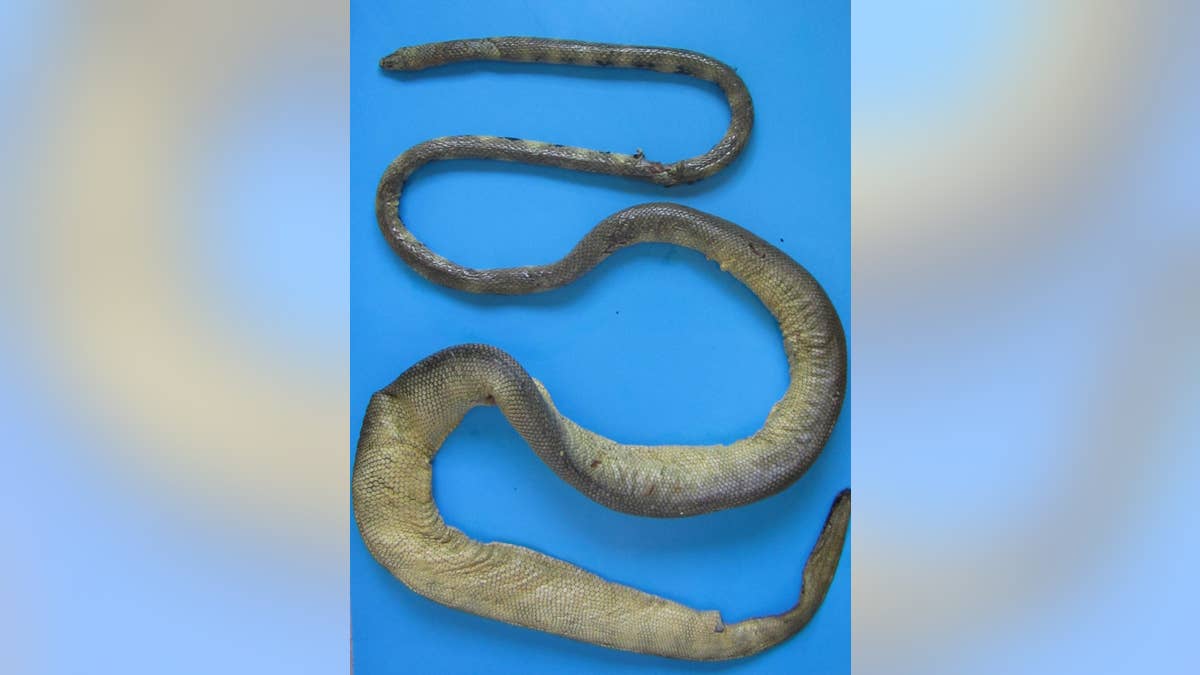
The head of an adult Günther's sea snake. (Mohsen Rezaie-Atagholipour)
A fishing trawler off the coast of Iran caught a rare poisonous sea snake, the first time it has ever been found in that region, researchers have reported in a new study.
The small-headed snake was found in the Gulf of Oman, about 250 miles to the west of what was previously thought to be its range. The researchers describe the 44-inch snake as yellowish and “dark olive” in color with a “unique” fang shape. The specimen is now located at a museum at Iran’s Shahid Bahonar University of Kerman.

Günther's sea snake (Mohsen Rezaie-Atagholipour)
The snake is viviparous, meaning it gives birth to live young, and was first discovered in 1864 by a zoologist named Albert Günther. Because of its small head, its scientific name is Microcephalophis cantoris, but it's also called Günther's sea snake.
The researchers, who hail from Iranian institutions and a French natural history museum, sampled sea snakes in the Gulf of Oman and the Persian Gulf, which they list in a report in the journal ZooKeys.
